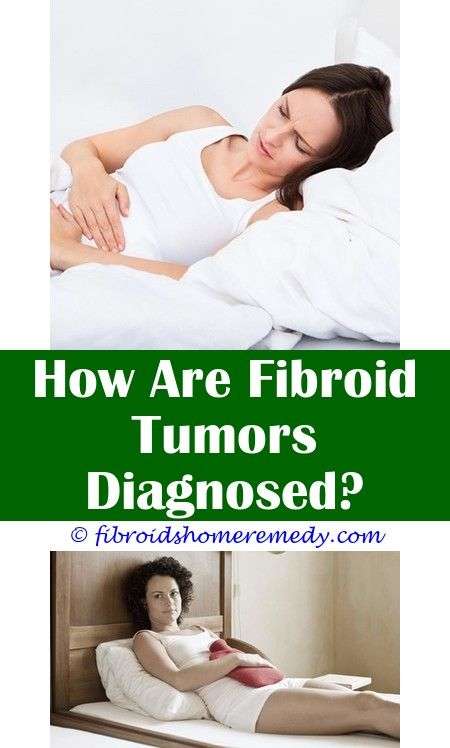Herbal Treatment Of Uterine Polyps
Herbal remedies may help treat uterine polyps or reduce the symptoms. Further research is needed to determine if these drugs work or what dosage is needed.
Green tea
The bioflavonoids in green tea, called EGCG, may help reduce the size and number of uterine polyps. This is due to the ability of green tea to reduce inflammation and remove toxins from the body.
Five fingers
The five-fingered plant is used for heavy menstrual bleeding, painful periods and other symptoms. This herbal remedy helps to balance hormone levels. As a result, they are also useful in the treatment of uterine polyps.
What Are The Symptoms Of Fibroids
Its possible to have more than one type of fibroid, just like it is possible to have more than one fibroid. These growths can cause a range of debilitating symptoms, the most common being heavy, prolonged, or painful periods and moderate to severe menstrual cramps.
Other symptoms include:
- Pain during sex and loss of libido
- Pelvic pressure, distended and bloated abdomen
- Pelvic pain, lower back pain, and pain in the back of the legs
- Anemia can lead to a lack of energy and fatigue
- Weak bladder control, frequent urination because of bladder pressure
- Constipation
- Infertility
While up to 80% of women will develop fibroids by the age of 50, many women go through life never realizing they have fibroids. Only symptomatic fibroids are recognized as a health condition that requires treatment. Fibroids are the leading cause of hysterectomy in the U.S. However, this benign condition is treatable through non-surgical alternatives. A recent study suggests that nearly 1 in 5 women who undergo a hysterectomy for a benign condition may not need it.
Fibroids disproportionately affects African-American women, who are threetimes more likely to develop fibroids. Additionally, family history of uterine fibroids and environmental factors such as obesity, onset of menstruation at an early age, use of birth control, and a deficiency in vitamin D are also known risk factors. A womans fertility may be impacted by fibroids, and 1 in 4 women who have endometriosis are also diagnosed with fibroids.
Why Does Endo Belly Happen
Endometriosis and its symptoms arent well understood. There are many factors that we are still studying. When it comes to endo belly, we know that endometrial tissue on your abdominal and pelvic organs can cause inflammation.
Endometriosis on your ovaries can also trap blood and other fluids, leading to the formation of ovarian cysts. There are also links between endometriosis and gastrointestinal issues, including gas and constipation.
Also Check: Align Probiotic Supplement Facts
Fibroids Endometriosis Adenomyosis And Uterine Polyps
Many women have experienced PMS before, but when symptoms interfere with the quality of life, its time to speak with a womens health specialist. Reproductive health disorders often share symptoms with other conditions, and its not uncommon for a woman seeking answers to be misdiagnosed. When it comes to diagnosing a womans extreme PMS symptoms, there are four possible culprits that all share a similar symptom profile.
Here are four lookalike diseases that can cause menstrual irregularities, pelvic pain, and fertility-related complications:
Why Do I Look 5 Months Pregnant

An enlarged abdomen due to fibroids can cause women to appear to be as many as five months pregnant. Along with causing extreme discomfort and possible damage to surrounding organs, this situation can have a devastating emotional impact on affected individuals.
If you look five months pregnant due to the presence of fibroids, you may suffer from a lack of self-esteem. You may feel sad, angry, or depressed. If you are also struggling with fertility and someone mistakenly thinks you are pregnant, this can be especially heartbreaking.
Fortunately, our fibroid experts care about both your physical and emotional health. We want you to know that effective, non-surgical fibroid treatment exists that can potentially resolve this difficult situation.
Recommended Reading: Does Salad Give You Gas
Diagnosis Of Uterine Polyps
Your doctor can look inside your uterus to check for polyps. If they see any, they may be able to remove them at the same time.
Before the exam, you may need to take antibiotics, pain relievers, or medicines to dilate your cervix.
Tests include:
- Transvaginal ultrasound. Your doctor puts a slender wand-like device inside your vagina. It gives off sound waves and sends them to a computer to create images of the inside of your uterus.
- Hysterosonography or sonohysterography. Your doctor can use this procedure during a transvaginal ultrasound. They put a thin tube called a catheter inside your vagina and inject salt water into your uterus. The liquid expands your uterus to allow a clearer ultrasound.
- Hysteroscopy. Your doctor puts a thin, flexible, lighted telescope, called a hysteroscope, through your vagina and cervix and into your uterus. It lets them look at the tissue lining the inside. If they see polyps, they can use tools to remove them at the same time.
- Endometrial biopsy. Your doctor uses a soft plastic tool to take a piece of tissue from the lining of your uterus. Theyâll send that tissue sample, called a biopsy, to a lab to test it for cancer cells.
- Curettage. You have this procedure in an operating room. Your doctor uses a metal instrument with a small loop on one end, called a curette, to get a piece of a polyp or the tissue in your uterus for testing. They can also use the curette to remove polyps.
Sneaky Signs Of Fibroids That You Should Know
The signs of fibroids can be so sneaky that many women have no idea they are there. In fact, according to the NIH or National Institutes of Health, up to 80% of women have fibroids by age 50 and many dont realize it.
They can be the size of a pea or as large as a small watermelon, so obviously size is a significant factor. There are 8 sneaky signs of fibroids that you you should know, and any combination should be cause for concern.
You May Like: Ibs Mayoclinic
How Do You Temporarily Gain Weight For A Weigh In
Gaining Weight Before The Weigh-In:
Your Periods Are Out Of Control
There are a lot of things that can cause changes to your menstrual cycle, and fibroids are a super-common culprit. If you have what we call a submucosal fibroid, a fibroid within the uterine cavity, youll bleed much more than typical, says Shirazian. That means your period would be longer, heavier, or you might bleed in between periods.
Were not talking an extra day or a little spotting herethe bleeding would be significantly greater than or different from your norm.
You May Like: Align Extra Strength Probiotics Supplement
Recommended Reading: Who Makes Align Probiotics
Can Uterine Polyps Cause Stomach Bloating
Infections occur in the abdomen when tissue in a similar shape to endometrials increases. It results in swelling, loss of water, and diarrheal stool. There are two ways in which endometrial-like tissue covers or grows into the ovary. An allergic reaction could occur or symptoms could include bloating due to trapped blood in the body.
What Causes A Uterine Polyp
Research has shown a causative link between the following factors that influence the growth of polyps:
Recommended Reading: Align Probiotic Label
Symptoms Of Uterine Polyps
After developing uterine polyps, most women do not have any symptoms, and a majority of them do not require any treatment. However, gynecologists have several ways of detecting uterine polyps and getting rid of them. Uterine polyps may have specific symptoms, including:
- Heavy or excessive bleeding
- Spotting and bleeding in between your periods
- Prolapse this occurs if a uterine polyp protrudes through the cervix, out of the uterus
- Vaginal bleeding after menopause
- Irregular menstrual periods- you might be unable to predict the heaviness, length, and timing of your periods
- Trouble conceiving
Diagnosis Of Endometrial Polyps

We still dont know exactly what causes endometrial polyps, but hormone levels may play a part in how they develop. During your menstrual cycle, the level of estrogen in your body rises and falls and this is what causes the lining of your womb to develop in preparation for a fertilized egg.
Overactivity in the development of the lining results in a uterine polyp. Most commonly they affect women right before and during menopause. This means that you are more likely to be diagnosed with polyps in your 40s and 50s when estrogen levels in your body are fluctuating. In some cases, younger women can also develop polyps.
Uterine polyps may cause no symptoms, particularly if there is a single polyp or if they are small. The most common sign is bleeding but you may notice any combination of these other symptoms:
- irregular periods that vary in their timing and heaviness
- heavy periods
- bleeding or spotting between periods
- bleeding after menopause
- difficulty getting pregnant
The symptoms of uterine polyps can be identical to those of uterine cancer even though most cases are benign, its important to take the condition seriously. Polyps are more likely to be a precursor to cancer in women who are postmenopausal.
Fibroids can cause heavy bleeding but are also associated with symptoms like pain, constipation, and difficulty urinating. Fibroids can be investigated using the same methods as those that are used for endometrial polyps.
Also Check: Pickles And Gerd
Complications Arising From Uterine Polyps
Most endometrial polyps are not cancer however, if the polyps are left untreated, they might develop into cancer. The chances of the polyps becoming cancerous are higher in women who have undergone menopause. If you have polyps, you could have a hard time conceiving, and if you conceive, chances of getting a miscarriage are high. The endometrial polyps could prevent a fertilized egg from attaching on your uterus, thus preventing conception. The growths could also block the cervix and fallopian tubes. The removal of endometrial polyps could help improve the chance of conceiving.
Other Symptoms To Look Out For
Aside from bloating and weight gain, fibroids that keep growing can put pressure on other organs, particularly the bowels. Some women experience frequent urination, blocked intestines, constipation and a feeling of fullness. On top of that, heavy bleeding during your period can lead to reduced iron levels which can cause anemia. This can leave you feeling lethargic and fatigued and leads many women to comfort eat, which is another indirect way that fibroids can cause weight problems.
Also Check: Do Pickles Cause Heartburn
Can Uterine Fibroids In The Uterus Cause Excessive Gas Diarrhea And Bloating
Tummy Trouble with Uterine Fibroids
It is possible to experience a handful of stomach trouble when you have uterine fibroids. This, however, might not be too big of a concern for most women unless it hampers their daily activities. Small growths in the uterus usually do not present symptoms, but larger fibroids can cause you to have excessive gas, diarrhea, and bloating.
Size and Location Matter
The bigger the fibroids in the uterus, the more likely they are to cause symptoms in the abdominal area. The non-cancerous tumors may cause the uterus to grow larger and press on the bowels. When this happens, the patient could experience excessive gas and bloating.
The location of the non-cancerous tumors is also a factor in assessing a patients condition and predicting what possible symptoms to expect. As the fibroids grow at the back of the uterus and press onto the rectum, for instance, they block the passage of stool and thus cause constipation. Hard stools are trapped and loose stool goes beyond the point where the fibroids press against the rectum.
Not Your Ordinary Tummy Problems
Excessive gas, diarrhea, and bloating might sound to be ordinary occurrences that most people actually experience every once in a while. These can be relieved using simple solutions from herbal formulations to pharma tablets and capsules. But, when they occur to often or if you are experiencing other symptoms, you have to see your doctor to seek the right treatment.
Dont Suffer in Silence
Pain In The Back Legs And Pelvis
This type of pain is less common with fibroids, but it can occur. The location and size of the fibroid determines how much pain is felt, and where it radiates from. If the fibroid is located within the uterus, there may be pelvic pain, whereas if it is located near the back then pain can stem from the lower back and down the legs.
If you have any combination of these 8 sneaky symptoms of fibroids, dont wait to see Womens Care of Alaska, schedule an appointment today at 279-2273!
Don’t Miss: Tramadol Causes Constipation
What Happens If Uterine Polyps Are Left Untreated
Several small uterine polyps go undetected and are often on their own . Although they may cause symptoms that lead to quality of life deterioration and might lead to complications, most untreated polynesiacs are harmless. In the condition, there are not enough healthy red blood cells to function properly within the body.
Uterine Polyps And Infertility
Infertility is defined as the inability to conceive after one year of trying. One study noted that the prevalence of diagnosing unsuspected intrauterine abnormalities during hysteroscopy prior to in vitro fertilization was between 11% and 45%. If a person is experiencing abnormal vaginal bleeding, it’s more likely that polyps are present.
Uterine polyps can prevent a fertilized egg from implanting in the uterine wall. They can also block the area where the fallopian tube connects to the uterine cavity, preventing sperm from traveling into the tube to meet the egg.
Similarly, they can block the canal of the cervix, which would prevent sperm from entering the uterus at all. Polyps may also play a role in miscarriage for some people.
In a study published in 2005, women undergoing artificial insemination after having their polyps removed became pregnant at about twice the rate of women who did not have their polyps removed. In fact, the women who had their polyps removed often became pregnant without artificial insemination.
Don’t Miss: I Ate A Salad And Now Have Diarrhea
Saline Infusion Sonography Or Sonohysterography
Saline infusion sonography or SHG is the gold standard for diagnosing endometrial polyps82 increases contrast of the endometrial cavity enabling the viewing size, location and other features of endometrial polyps. Endometrial polyps appear as echogenic smooth masses.83 Schwarzler et al.83 reported that SIS or SHG method improved diagnosing accuracy, picking up small polyps missed on TVUS. Differentiating endometrial polyps from submucosal fibroid is also difficult using SIS.84 SIS, however, has the advantage of assessing both the uterine cavity and other pelvic structures visualising potential myometrial and adnexal abnormalities. The main disadvantage is its ability to determine final endometrial disease as it does not allow for a histological diagnosis.85 Exalto et al.85 observed patient discomfort due to fluid leakage or pain with the use of a balloon catheter. Furthermore, saline solution infusion may enhance sonographic details.86
Saline infusion sonography or Sonohysterography ultrasound image showing an endometrial polyp. Used with permission from Associate Professor Kirsten Black, Discipline of Obstetrics, Gynaecology and Neonatology, The University of Sydney via Dr Philippa Ramsay, Ultrasound Care, Sydney, NSW, Australia.
Noticing A Stomach Bulge You May Have Fibroids

- Details
- by: Leah Johnson
If you are experiencing bloating, unexplained weight gain, or pain in your abdomen, you may be suffering from an enlarged uterus. The uterus is designed to expand from the size of your fist to the size of a watermelon to accommodate a growing baby. However, if your uterus is expanding and youre not expecting, you need to see your doctor to make a diagnosis. Many times, an enlarged uterus is not a cause for alarm. However, there are some conditions that will need medical intervention.
Recommended Reading: Peppermint Tea And Constipation
Whats Going On With My Uterus 3 Conditions Related To Pelvic Pain And Bleeding
Too many times Ive seen women ignore abnormal bleeding or pelvic pain because they think its normal. In reality, these symptoms can be signs of abnormal cell growth in the uterus, also known as the womb, a major female reproductive organ.
The uterus contains various types of cells to help women carry a baby. When cells grow abnormally, three common and sometimes painful conditions can arise:
Each condition causes symptoms that can negatively impact womens quality of life, such as pain, abnormal bleeding, and fertility issues. However, treatment is available through medication or surgery, depending on a womans specific needs.
What Causes Endo Belly
With endometriosis, the endometrial-like tissue thats located in places outside the uterus acts in the same way the endometrium does: It builds up then breaks down and bleeds each month, just like the lining of your uterus.
But because this tissue doesnt have a way to leave your body, it gets trapped. The surrounding tissue can become inflamed and irritated, which can cause scar tissue to form. It can also cause the tissues inside the pelvis to stick together.
Bloating and fluid retention are common endometriosis symptoms. One older study, for example, found that 96 percent of women with endometriosis experienced belly bloating compared with 64 percent of women who didnt have the condition.
There are several reasons why endometriosis may cause abdominal bloating:
- Buildup of endometrial-like tissue can cause inflammation in the abdomen. This can result in swelling, water retention, and bloating.
- The endometrial-like tissue can cover or grow into the ovaries. When this happens, trapped blood can form cysts, which may cause bloating.
- Those with endometriosis are more prone to small intestinal bacterial overgrowth and fibroids, which may also lead to bloating.
- Endometriosis often causes issues with digestion, such as constipation and gas.
You May Like: Does Fish Oil Help With Constipation